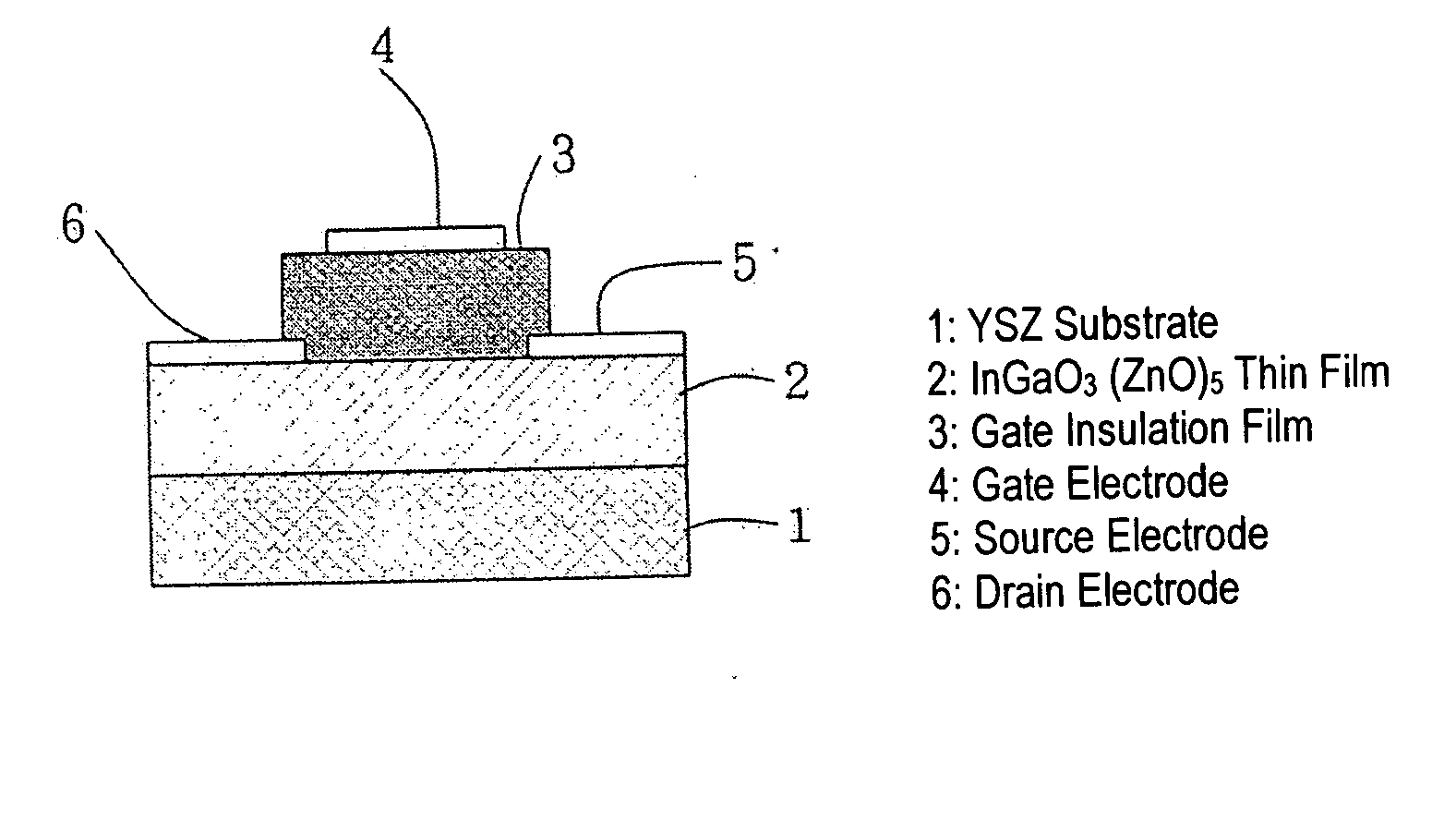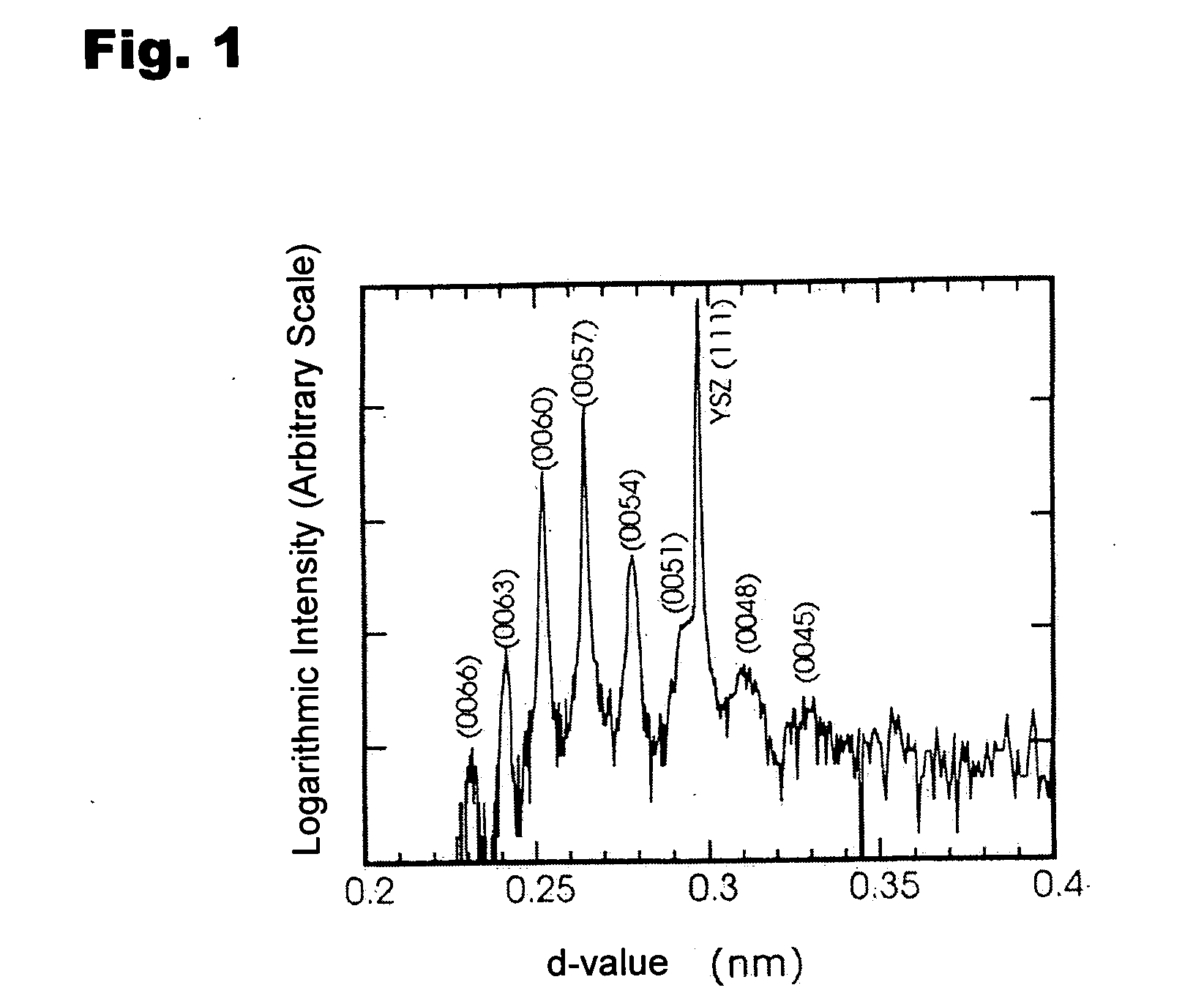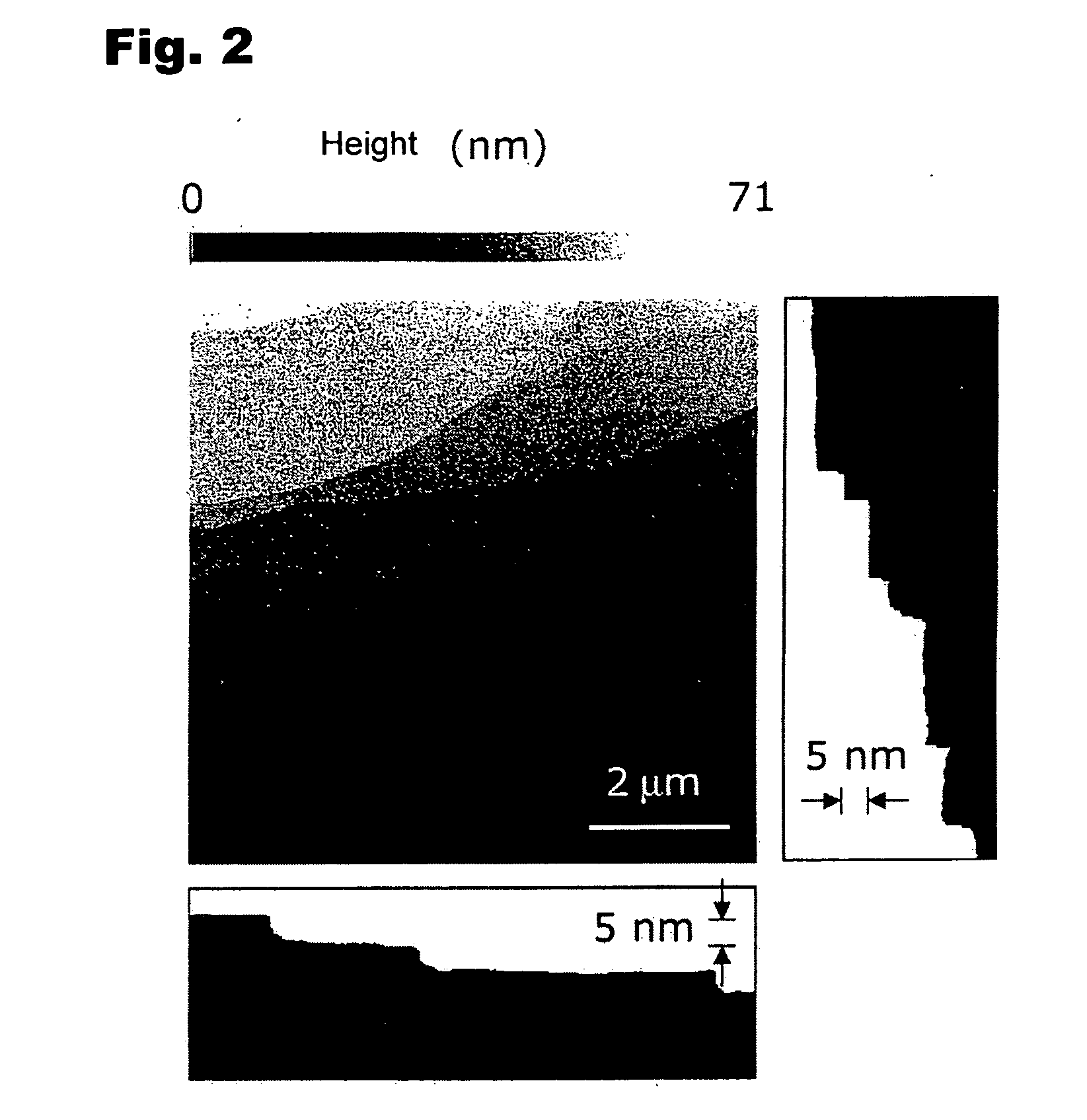Natural-superlattice homologous single crystal thin film, method for preparation thereof, and device using said single crystal thin film
a single crystal, natural superlattice technology, applied in the direction of crystal growth process, polycrystalline material growth, chemistry apparatus and processes, etc., can solve the problems of irregularity having considerable adverse effects, and achieve excellent insulation performance, excellent switching characteristic, and small deviation
- Summary
- Abstract
- Description
- Claims
- Application Information
AI Technical Summary
Benefits of technology
Problems solved by technology
Method used
Image
Examples
example 1
[0084] The present invention will be described in more detail in connection with the following Examples.
[0085] 1. Formation of ZnO Thin Film
[0086] A ZnO thin film was grown on a YAS (111) single-crystal substrate (10 square mm×0.5 mm t) at a substrate temperature of 800° C. Through a PLD process, a KrF (248 nm) excimer laser was irradiated to a target of ZnO sintered body in a vacuum chamber set at an oxygen pressure of 3×10−3 Pa to vaporize ZnO, and the ZnO was deposited on the YAS (111) single-crystal substrate heated at 800° C., at a deposition speed of 2 nm / min for 1 hour to form the ZnO thin film. According to the analysis of the prepared ZnO thin film by means of a high-resolution X-ray diffraction (HRXRD) technique, ZnO was deposited on the YSZ (111) substrate in (0001) orientation at a tilt angle of 0.02 to 0.1 degrees. Further, through an In-plain measurement, it was verified that the ZnO was epitaxially grown adequately. The epitaxial relationship between the ZnO and the...
example 2
[0100] In was selected as M1M2, and grown on the ZnO epitaxial thin film formed in the manner described in Example 1 to form an In2O3 thin film. Then, through a PLD process, a KrF (248 nm) excimer laser was irradiated to a target of In2O3 sintered body in a vacuum chamber set at an oxygen pressure of 3×10−3 Pa to vaporize LuGaO3(ZnO)9, and the In2O3 was deposited on the YSZ (111) single-crystal substrate heated at 600° C., at a deposition speed of 2 nm / min for 30 minutes to form the In2O3 thin film. The In2O3 was heteroepitaxially grown on the ZnO thin film, and the epitaxial relationship therebetween was as follows: [0101] In2O3 (111) / / ZnO (0001) / / YSZ (111) [0102] In2O3 (110) / / ZnO (11-20) / / YSZ (1-10).
[0103] The formed bilayer thin film was subjected to a thermal anneal treatment at 1300° C. in the atmosphere for 20 minutes, in the manner as described in Example 1. As a result, the formation of an epitaxial thin film of In2O3 (ZnO3)4, In2O3 (ZnO3)5 and In2O3 (ZnO3)6 which were mixe...
example 3
[0108] 1. Formation of Single Crystal InGaO3 (ZnO)5 Thin Crystal
[0109] A ZnO thin film having a thickness of 2 mm was epitaxially grown on a YSZ (111) single-crystal substrate through a PLD process at a substrate temperature of 700° C. Then, after the substrate temperature was reduced to room temperature, a polycrystal InGaO3 (ZnO)5 thin film having a thickness of 150 nm was deposited on the ZnO epitaxial thin film through a PLD process. The formed bilayer thin film was taken out to the atmosphere, and subjected to a thermal anneal treatment using an electric furnace at 1400° C. in the atmosphere for 30 minutes. After the completion of the treatment, the treated film was cooled to room temperature.
[0110] As the result of an XRD measurement, it was proved that the thin film subjected to the heating was a single crystal InGaO3 (ZnO)5 as shown in FIG. 6. Further, as the result of an AFM observation, it was proved that the surface of the thin film was an atomically smooth surface havi...
PUM
 Login to View More
Login to View More Abstract
Description
Claims
Application Information
 Login to View More
Login to View More - R&D
- Intellectual Property
- Life Sciences
- Materials
- Tech Scout
- Unparalleled Data Quality
- Higher Quality Content
- 60% Fewer Hallucinations
Browse by: Latest US Patents, China's latest patents, Technical Efficacy Thesaurus, Application Domain, Technology Topic, Popular Technical Reports.
© 2025 PatSnap. All rights reserved.Legal|Privacy policy|Modern Slavery Act Transparency Statement|Sitemap|About US| Contact US: help@patsnap.com



